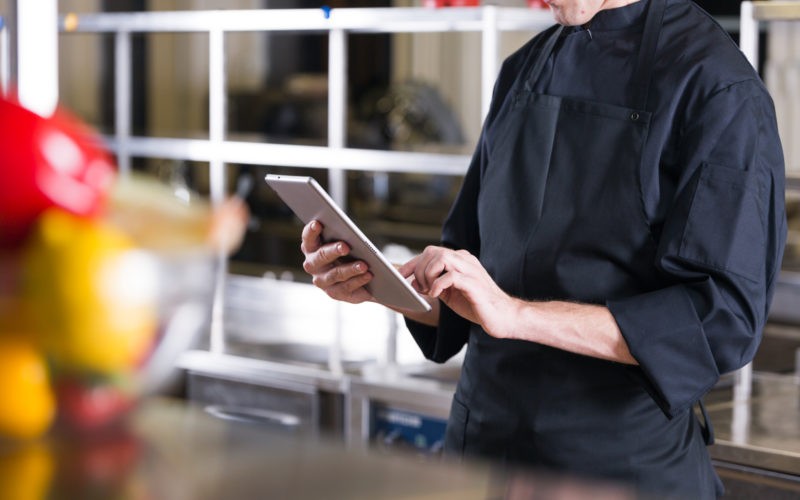Operating a successful restaurant is more than serving excellent food and giving excellent service. There are health and safety standards that play a major role in protecting your customers, your employees, and your business. These sets of regulations have been devised to avoid diseases that can be acquired from food, a safe environment to work in, and safety of the people. Thus, here goes the detailed guide to the main health and safety standards the restaurant business should pay attention to.
Following the Food Safety Legislation
The main concern of any restaurant should be food safety. Foodborne illness possibilities have to be minimized along with the taking of measures that ensure the food is safe to eat. This has to be done through a compliance program with the local, state, and federal laws on food safety. These laws most of the time are based on agencies such as the FDA, CDC, and OSHA.
Safe Food Handling Practices
Good food handling means avoiding contamination. This would involve training employees to know the frequency of washing hands, use of gloves, and sanitizing of surfaces. Furthermore, cross-contamination should be avoided through the use of different cutting boards and utensils for raw meat and vegetables. Food must be kept at appropriate temperatures: the refrigerator at 40°F, or 4°C, and the freezer at 0°F, or -18°C.
Temperature Control
Foods that are hot need to remain above 140°F (60°C), foods that are cold must remain below 40°F(4°C). Thermometer use is frequent in proper cooking and storage temperatures. Also food should not be at room temperature for extended time periods. Many people refer to the “2-hour rule,” with perishable food that should not be out for more than two hours.
Use a Kitchen Display System
Modern technology may go a long way in maintaining health and safety standards, and one of the best examples of this is a Kitchen Display System, commonly known as KDS. The system smoothes operations by replacing traditional paper tickets with digital displays that organize orders efficiently.
Kitchen display systems reduce paper clutter around the hot surfaces, open flames, or areas of food preparation, preventing fire hazards while maintaining organization. Moreover, KDS can be integrated with inventory systems to track ingredient usage and monitor expiration dates, helping restaurants ensure that only fresh ingredients are used.
Wholesome Food Labeling and Rotation
All food must be dated upon receipt or preparation so that the oldest stock is used before the new stock. This way, spoiled or expired food will not be served. Records of suppliers and dates of delivery must also be available for reference to determine freshness of ingredients.
Cleaning
A clean environment is not only important for the safety of the food but also for employee and customer health and comfort. Cleaning will help your restaurant maintain hygiene standards and reduce contamination.
Kitchen Sanitation
The kitchen is the heart of any restaurant, and cleanliness is not to be compromised. All cooking equipment, utensils, and surfaces should be cleaned and sanitized regularly. This would include stoves, ovens, grills, and refrigerators. All non-porous surfaces, such as stainless steel, need to be wiped down with food-safe sanitizers in order to get rid of bacteria.
Cleanliness of the Restrooms
The restrooms should be cleaned regularly as well as supplied with soap, toilet paper, and ways to dry the hands. Many health inspectors will check the restrooms since this is a good indication of the restaurant’s overall cleanliness level. Have the employees wash their hands after using the restroom and also provide the customers with a clean, well-stocked restroom.
Waste Disposal
The wastes should be disposed of properly to avoid adulteration and foul odors. The dustbins should be cleared regularly; moreover, the vicinity of the dumpster must also be kept clean. The staff members must be trained on safe and hygienic handling of garbage-wearing gloves while handling it to avoid cross-contamination.
Safety at Workplace
Restaurant employee safety is of higher importance, just like that of food safety. Injuries are caused in the kitchen area, dining areas, and other places around restaurants. Minimizing accidents, liability, and providing a very productive environment, workplace safety standards are being implemented.
The kitchen and dining areas may easily become slippery, hence leading to hazardous falls. The floors should always be cleaned and dry, and non-slip mats laid out in areas where spills are more frequent, such as the kitchen and dishwashing areas. Workers should wear shoes that have a non-slip feature to minimize accidents.
Fire Safety
Restaurants are at risk for fires, most in the kitchen area with much hot equipment and open flame. Fire extinguishers should be installed and maintained in easily accessible locations. Fire suppression systems should be inspected on a regular basis, as well as training employees for emergencies. Fire exits always need to be clearly marked and unblocked and accessible at all times.
Employee Training
All employees should be adequately trained on the safety procedures for working with sharp knives, heavy lifting, and hot equipment. These regular sessions will help the staff become fully aware of the best practices for handling any kind of emergency situation. The safety procedure policies should be periodically reviewed for their due compliance.
Health Inspections and Compliance
Health inspections are among the facts of life in running restaurants. They will inspect your establishment on preset standards for safety and cleanliness. If these fail, this can also mean fines, closure, and damage to reputation, or worse. It takes preparation on your part, from regular self-checks down to records of food safety practices.
Conclusion
Application of good food handling, cleanliness of the place, and workplace safety would give the ideal environment for customers’ confidence in the food they eat, satisfaction of employees at work, and profitability of the business venture in the future. The restaurant will be ahead in business with high standards of health and safety through training regularly, conducting routine inspections, and commitment to compliance.












